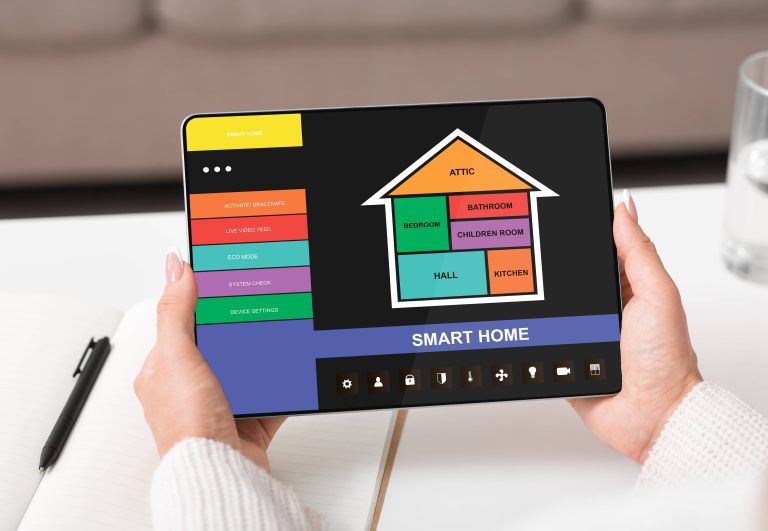
In an era where every aspect of our lives is becoming increasingly connected, the kitchen—a quintessential hub of the home—is no exception. Automating your kitchen not only enhances convenience but also transforms everyday cooking and cleaning into seamless experiences. Whether you’re a tech enthusiast or someone looking to upgrade and simplify your culinary activities, here’s a comprehensive guide on automating your kitchen for maximum efficiency.
1. Smart Kitchen Appliances: The Heart of Automation
Smart Refrigerators
Smart refrigerators serve as the command center of an automated kitchen. These high-tech appliances offer features like internal cameras to monitor food inventory, touch screen interfaces for browsing recipes, and integration with voice assistants for hands-free operation. Brands like Samsung’s Family Hub and LG’s InstaView are leading the way, transforming your refrigerator into a multi-functional device.
Smart Ovens and Ranges
Smart ovens take the guesswork out of cooking. With Wi-Fi connectivity, you can preheat, adjust temperatures, and monitor your cooking progress remotely through your smartphone. Additionally, these ovens often come with automated cooking settings, recipe guidance, and even the ability to recognize the type of food you’re cooking to set optimal conditions for a perfectly cooked meal.
Smart Dishwashers
Eliminating the tedious task of washing dishes, smart dishwashers come equipped with sensors that analyze the dirty load and automatically adjust the water flow, temperature, and detergent levels for efficient cleaning. Some models can be controlled via apps, allowing you to start or stop a cycle and even get notified when the dishes are done.
2. Smart Assistants: The Ultimate Kitchen Companions
Voice Assistants
Voice-activated assistants like Amazon Alexa, Google Assistant, or Apple’s Siri can be invaluable in a smart kitchen. You can set timers, convert measurements, find recipes, and even control other smart kitchen gadgets without lifting a finger.
Smart Displays
Smart displays, such as the Google Nest Hub or Amazon Echo Show, are excellent multitaskers. These devices provide step-by-step recipe instructions, play cooking tutorials, showcase your calendar for meal planning, and link with other smart devices allowing you to manage your kitchen effortlessly.
3. Smart Kitchen Tools for Precision and Convenience
Smart Scales
Precision is key in cooking and baking. Smart scales connect to your smartphone, providing accurate measurements and guiding you through recipes with step-by-step precision. They are perfect for those looking to perfect their culinary skills or experimenting with new recipes.
Smart Thermometers
Never worry about undercooking or overcooking your meals again with smart thermometers, like the Meater or the iGrill. These devices monitor the internal temperature of your food and send alerts to your phone when it reaches the desired temperature.
Smart Pressure Cookers
Instant Pot’s smart models allow you to control cooking settings remotely. These multi-functional devices can pressure cook, slow cook, sauté, steam, and even make yogurt, simplifying meal preparation significantly.
Smart Coffee Makers
Start your day the right way with smart coffee makers. These appliances can be scheduled to brew coffee at specific times, controlled remotely via an app, and some even let you customize brew strength and flavor profiles for a perfect cup every time.
4. Enhanced Efficiency with Smart Storage Solutions
Automated Canisters and Containers
Smart storage solutions, like weight-sensing canisters, keep track of pantry inventory and notify you when supplies are running low. Integrating these with your grocery apps ensures you never run out of essential ingredients.
Vacuum Sealers
Keeping food fresh is crucial for an efficient kitchen. Smart vacuum sealers preserve food much longer by removing air. They often come with companion mobile apps that can suggest recipes based on what’s stored and track expiration dates.
5. Integrating Kitchen IoT Systems
Connectivity Platforms
To streamline your automated kitchen, integrating all your gadgets into a unified system is essential. Platforms like Samsung SmartThings, Apple HomeKit, or Amazon’s Alexa-compatible systems allow you to control all your devices from a single interface. These connected ecosystems also enable automation scenarios; for example, your coffee maker can start brewing as soon as your morning alarm goes off, or your oven can preheat itself when you begin preparing a recipe.
IFTTT (If This Then That)
IFTTT is a service that lets you create chains of conditional commands called applets. For instance, you could set up an applet so that your smart lights blink when the oven timer goes off, or your refrigerator sends you a notification if the door has been left open for too long.
6. Maintaining Security and Privacy
Secure Networks
Automation involves a multitude of connected devices, making it vital to prioritize security. Ensure all your devices are connected through a secure, trusted network. Use robust passwords, regularly update firmware, and consider investing in a smart home cybersecurity hub to safeguard against potential breaches.
Privacy Measures
With various devices collecting data, it’s crucial to understand and manage privacy settings. Regularly review permissions and be selective about the information you share, ensuring it aligns with trusted and private use.
Conclusion
Automating your kitchen can significantly enhance your cooking efficiency, convenience, and overall kitchen experience. By investing in smart appliances, integrating voice assistants, utilizing smart tools, and leveraging IoT platforms, you can create a harmonious and futuristic culinary space. Embrace these innovations, and turn your kitchen into a sophisticated, technologically advanced hub that not only anticipates your needs but also simplifies your culinary adventures. Welcome to the future of smart home cooking!







